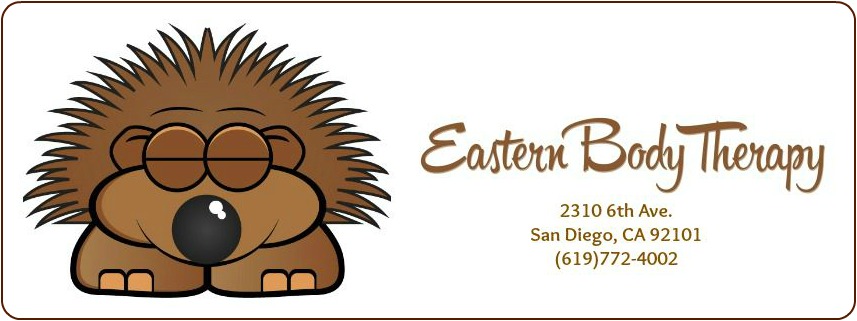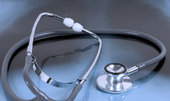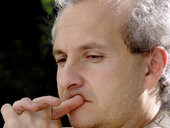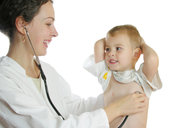 |
||
|
||||||||||
| About Us | ||||||||||
|
||||||||||
| Schedule Appointment | ||||||||||
| Help For Your Health | ||||||||||
|
||||||||||
| Testimonials/Success Stories | ||||||||||
| Our Blog | ||||||||||
 Yelp About Us Yelp About Us |
||||||||||
| Newsletter Archives | ||||||||||
| Resources and Links | ||||||||||
| FAQs | ||||||||||
| Home |
TCM Diagnosis
East vs West | Patient Interview | Observation | Sounds and Smells | Touch | A Pattern Emerges Diagnosis: East vs West Both Western physicians and Oriental Medicine practitioners will ask for your current symptoms and medical history. Both providers may order blood tests, saliva tests, x-rays or other imaging studies, and other tests. Both providers will conduct a physical examination, and both will use this information as a basis for their diagnosis and treatment plan. But, while a Western medical doctor will probably focus her examination and questioning to the symptoms at hand, providers of Oriental Medicine typically look at current symptoms in a context of the whole person including their physical, emotional and spiritual well being. back to top Asking: The Patient Interview
Sounds and Smells The Importance of Touch Pulse diagnosis is a cornerstone of Oriental Medicine diagnosis. While the Western practitioner looks only at the rate of the pulse, the Oriental Medicine provider looks at 16 qualities in each of three positions on each wrist. Each position corresponds to a pair of organs. The overall quality of the pulse taken against the backdrop of relative strengths and weaknesses of each of the positions provides a snapshot of the relative strengths and weaknesses of the organ systems. Some providers will actually check the pulse not only at the beginning of a treatment, but after insertion of each needle, using the pulse as a guideline to what is changing in the patient’s qi as the treatment is occurring. back to top A Pattern Emerges If the same patient presented with a slightly scratchy throat, no changes in bowel, bladder or appetite, runny nose, sneezing, slight headache with an achy neck, and no sweating, a slightly red throat on visual inspection, and a lung pulse which is superficial, normal rate and tight, the provider would diagnose an attack of wind-cold in the lung. Acupuncture points would be used to release the wind and cold and improve the overall strength of the lung qi. Chinese herbs could be used to scatter cold and release the exterior. Note that both patients in this example have symptoms which are typical of “common cold”. If they were to seek treatment from a physician, both would receive similar treatments to relieve symptoms of common cold. Yet, in Oriental Medicine, their herb formulas and acupuncture point prescriptions would be completely different! For the Oriental Medicine practitioner, the Western diagnosis is merely one part of the pattern, and it is the pattern which is important in determining the treatment plan. back to top
|
*DISCLAIMER: Testamonials used on this site are real comments made by people who have worked with us. As with any medical treatment, we cannot guarantee results and individual experiences may vary.
Images of people on this site are used for illustrative purposes only. The models depicted should not be construed to endorse any products or services promoted on this site, nor should they be construed to have any healthcare issues discussed on this site.Copyright © 2001-2017 Eastern Body Therapy. All Rights Reserved.

 How does a practitioner of Oriental Medicine determine what is wrong and how to treat it? The process of TCM diagnosis is quite different from the process of diagnosis in the allopathic world.
How does a practitioner of Oriental Medicine determine what is wrong and how to treat it? The process of TCM diagnosis is quite different from the process of diagnosis in the allopathic world.  The first part of diagnosis in Oriental Medicine is ASKING. During this part of an evaluation, the patient is asked to fill out paperwork and then interviewed. The practitioner will ask detailed questions about the patient’s current symptoms and past history. She will then ask additional questions about the patient’s sleep, digestion, elimination, sweating, temperature regulation, mood, appetite, pain, menstrual cycles if applicable, sex drive, food cravings, exercise habits, stressors, diet, and more. All of this information helps the provider to determine if the patient’s condition is internal or external, hot or cold, damp or dry, yin or yang, deficient or excess – all critical components of the Oriental Medicine diagnosis.
The first part of diagnosis in Oriental Medicine is ASKING. During this part of an evaluation, the patient is asked to fill out paperwork and then interviewed. The practitioner will ask detailed questions about the patient’s current symptoms and past history. She will then ask additional questions about the patient’s sleep, digestion, elimination, sweating, temperature regulation, mood, appetite, pain, menstrual cycles if applicable, sex drive, food cravings, exercise habits, stressors, diet, and more. All of this information helps the provider to determine if the patient’s condition is internal or external, hot or cold, damp or dry, yin or yang, deficient or excess – all critical components of the Oriental Medicine diagnosis. 
 The final component of Oriental Medicine diagnosis is TOUCHING. If the complaint is one of pain, the practitioner may palpate an injured joint or feel the joint as the patient moves through it’s ranges of motion. She may feel for tight muscles, misaligned vertebrae, a distended belly, or other abnormality. She may take the patient’s blood pressure, test for muscle strength, examine skin sensation, or perform orthopedic tests. The Oriental Medicine practitioner will nearly always feel the patient’s pulse.
The final component of Oriental Medicine diagnosis is TOUCHING. If the complaint is one of pain, the practitioner may palpate an injured joint or feel the joint as the patient moves through it’s ranges of motion. She may feel for tight muscles, misaligned vertebrae, a distended belly, or other abnormality. She may take the patient’s blood pressure, test for muscle strength, examine skin sensation, or perform orthopedic tests. The Oriental Medicine practitioner will nearly always feel the patient’s pulse. To make a diagnosis, the practitioner takes all the information from the asking, looking, listening, smelling, and touching parts of the evaluation and looks at the patterns that present in the information. For example, if a patient complains of a raw sore throat and slight fever for the last two days, has been slightly constipated for the same time, is running warm and occasionally sweating even though it is cold out, has a red throat on visual inspection, and has a lung pulse which is superficial, rapid and full, the provider would diagnose an attack of heat in the lung and provide Chinese herbs to clear heat from the lung and acupuncture to clear heat from the lung while supporting the patient’s qi. The treatment is for heat in the lung, which happens to manifest as a sore throat.
To make a diagnosis, the practitioner takes all the information from the asking, looking, listening, smelling, and touching parts of the evaluation and looks at the patterns that present in the information. For example, if a patient complains of a raw sore throat and slight fever for the last two days, has been slightly constipated for the same time, is running warm and occasionally sweating even though it is cold out, has a red throat on visual inspection, and has a lung pulse which is superficial, rapid and full, the provider would diagnose an attack of heat in the lung and provide Chinese herbs to clear heat from the lung and acupuncture to clear heat from the lung while supporting the patient’s qi. The treatment is for heat in the lung, which happens to manifest as a sore throat.